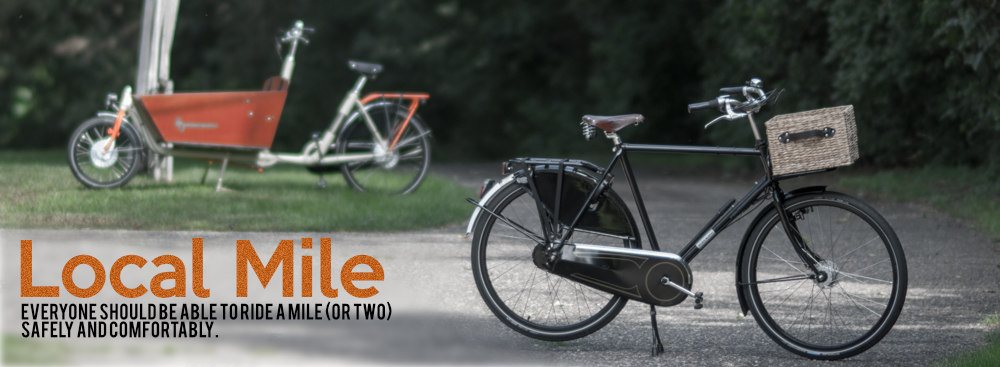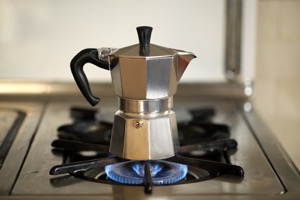I love cafés and bistros, and above all I love good coffee. There is almost nothing that compares with a good cappuccino or latté in the morning, especially if I’ve ridden my bicycle to get there. So, some thoughts on coffee.
This is a very brief overview and introduction to the world of coffee for people who don’t necessarily want coffee to be a hobby. There are much better and more in-depth resources on the web for those who want to go more in-depth.
A Good Cup
I’ve always enjoyed coffee’s and coffee drinks (and tea, beer, wine and scotch). What I’d experienced earlier in life was good but not great. Worse, I thought that was it. It was only when I spent a week near a great coffee place some decades ago and sampled their variety of correctly prepared drinks that I realized how good and enjoyable coffees could really be. So, what makes for a good coffee drink (in my opinion)?
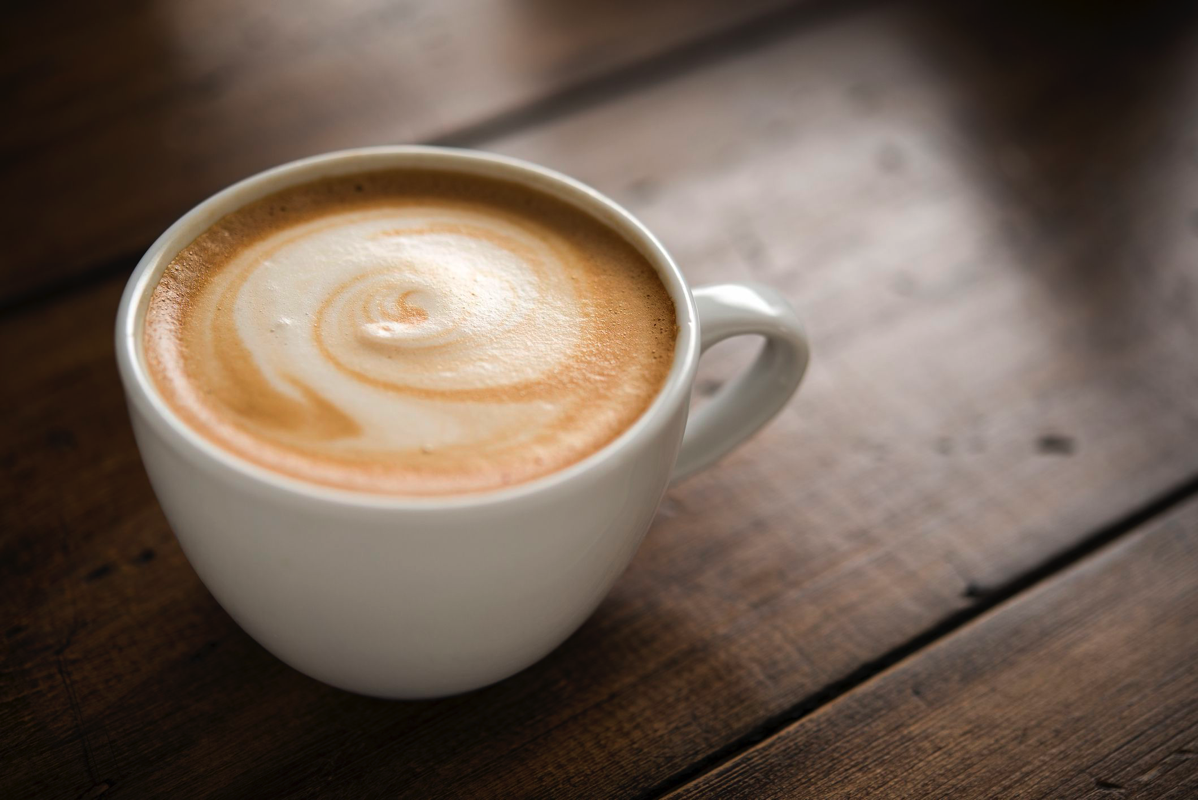
Ceramic Cup – This is surprisingly important. Paper imparts a bitter taste and especially to milk based drinks. Same for plastic lids and foam cups. Besides taste, it will also change the structure of milk and cause it to feel somewhat gritty. I always thought this was a poorly made drink until a barista in Austria told me that they never make milk based drinks in to-go cups and why that is. Ceramic cups and mugs (or glass) don’t cause these problems.
And, to get really picky, I personally prefer the feel on my lips of a thicker rounded ceramic mug to a thin paper cup and think that it makes for a more enjoyable experience. And a good coffee drink is indeed an experience and not just a drink.
Espresso – I’ll leave details to later (or others) but correctly pulled shots of espresso are critical. An incorrect espresso can be bitter, burned, too strong or weak tasting. If the espresso is not good, the drink will not be good.
Latté / Milk – The most important thing here is that it not be scalded. The milk should be steam heated until about 65°C. it should NEVER, in any part of the frothing jug, exceed 70°C. A mistake that I think many baristas in the U.S. make is allowing the wand to get too close to the bottom of the frothing jug which causes this area to quickly scald.
Froth – There is a difference in froth and suds. Froth has very tiny bubbles that should be difficult to see. Suds look more like dish soap. A very well done froth can usually be poured without the use of a spoon. Froth is enjoyable, suds are not. This is the one bit that can also vary from country to country. French cafés will often create a near meringue and pile it high. Austrian and Italian cafés produce a creamy froth that can still easily be poured while Dutch produce a much thinner but still good froth.
The Prep – First, there should always be a bit of espresso mixed in the steamed milk and froth as in the cappuccino above. Froth by itself, or worse, sudsy foamy milk, is not pleasant. Each sip should contain a bit of both. As to proportions of espresso, steamed milk, and froth, I’ll leave that to each individual barista. So long as the above are all done correctly, the proportions of each actually don’t matter that much.
The Finish – Topping off with a bit of powdered chocolate or sugar can be a nice touch.
Coffee at home
Best is really a matter of personal opinion. What I like may well not be what you like.
Coffee can perhaps be divided in to a few different genres; brewed coffee (American coffee), americano, espresso and the wide variety of espresso drinks. And then there’s Vietnamese coffee, Turkish coffee, Swedish coffee, …
Among coffee snobbery discussing brewed coffee you’ll hear a lot of debate about Aero Press vs Pour Over vs French Press vs Vacuum Pot. They’re different but none are really better than the others – in my opinion. All are my preferred methods for my daily morning cup and I alternate between them – variety is indeed the spice of life.
For push button automation there are two good options I’d recommend; Nespresso Original and Breville (Oracle or Oracle Touch). Better than Aero Press? Not necessarily. Different, enjoyable, not better but also not necessarily worse. There are other machines but in my experience these offer the best value in terms of drink quality and reliability.
If you order ‘coffee’ at a café outside the U.S. and they recognize you as American (and they will), they’ll often ask if you want coffee (or café) or American coffee. If you say American coffee they’ll pull a shot of espresso, add a fair bit of hot water to it, and you’ve got a really great cup of joe. You can do much the same at home with a good espresso machine such as a Rancilio Silvia or Breville Oracle. Again, different, but not necessarily better.
The great thing here is that among the best ways to make coffee are the least expensive. Pour-over, Aero-Press and French Press are quite affordable for a good grinder and one of the pots.
So, here are some quick thoughts on coffee at home starting with the most important element, a good grinder, and the second most important element, water temp:
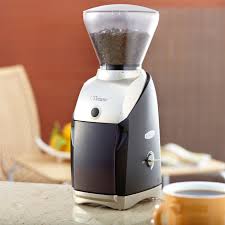 Baratza Virtuoso Grinder – Fresh and properly ground coffee is perhaps the most important element to a good cup. There are many good grinders and many that are much better than this, but for the money ($229) I think this is the best value. Next up the list might be a Mazzor Mini. And above that we’re back to Baratza for a Setté 270Wi or a step up to a flat burr grinder in the Vario-W or Forté. For good coffee this is the first and most important place to invest your money. Lessor expensive grinders and especially whirlybird grinders do not do a good job as they often overheat and scald the grounds and produce uneven grinds making it just about impossible to make good coffee. However, if you really want to keep the cost down then the Baratza Encore ($169) is an option. The grind isn’t as consistent and it results in more fines in the grind but otherwise it’s not bad. Personally I think spending the extra $80 easily worth it but then it’s easy to spend other people’s money 🙂
Baratza Virtuoso Grinder – Fresh and properly ground coffee is perhaps the most important element to a good cup. There are many good grinders and many that are much better than this, but for the money ($229) I think this is the best value. Next up the list might be a Mazzor Mini. And above that we’re back to Baratza for a Setté 270Wi or a step up to a flat burr grinder in the Vario-W or Forté. For good coffee this is the first and most important place to invest your money. Lessor expensive grinders and especially whirlybird grinders do not do a good job as they often overheat and scald the grounds and produce uneven grinds making it just about impossible to make good coffee. However, if you really want to keep the cost down then the Baratza Encore ($169) is an option. The grind isn’t as consistent and it results in more fines in the grind but otherwise it’s not bad. Personally I think spending the extra $80 easily worth it but then it’s easy to spend other people’s money 🙂
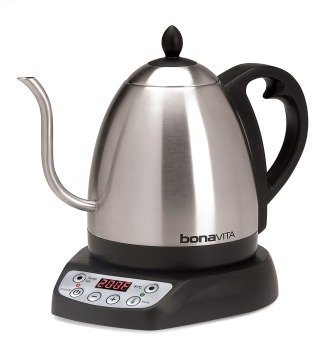 Bonavita Kettle – Water temp is important and the Bonavita nails it every time. I use 89°c for coffee and 96°c for black tea. A Bonavita is also easier to use. Fill it up, press a button, and you’ll have perfect temp water quite quickly. It’s easier to pour from and the handle never gets hot. Even though I was familiar with them I didn’t know what I was missing until my son and daughter-in-law gave me one for Christmas some years ago. It still gets constant use.
Bonavita Kettle – Water temp is important and the Bonavita nails it every time. I use 89°c for coffee and 96°c for black tea. A Bonavita is also easier to use. Fill it up, press a button, and you’ll have perfect temp water quite quickly. It’s easier to pour from and the handle never gets hot. Even though I was familiar with them I didn’t know what I was missing until my son and daughter-in-law gave me one for Christmas some years ago. It still gets constant use.
Water quality is important too. Some tap water is good as is, some, if you want really good coffee, should be filtered. Reverse Osmosis is actually not good as important minerals have been filtered out.
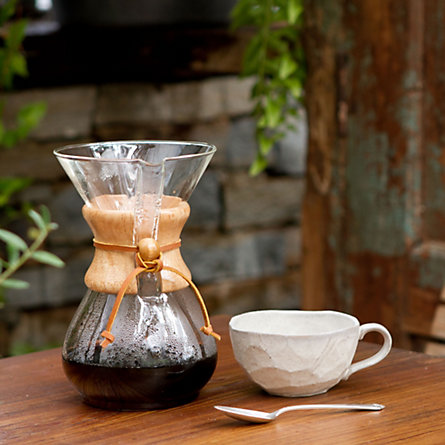 Chemex, V60, Pour-over – Produces a weaker coffee due to a much finer filter than those below and no pressure beyond gravity. Very enjoyable though and you will notice tastes that are absent in other brew methods. A good scale helps as you can zero out the pot & filter, add 16g drip grind coffee and just enough water until the coffee if fully wetted and blooms. Let it sit for about 30-60 seconds and then fill to around 400-450 grams total weight. If using a metal filter then I remove the filter before all of the water has dripped through to reduce the mount of ‘fines’ or small grinds in the coffee.
Chemex, V60, Pour-over – Produces a weaker coffee due to a much finer filter than those below and no pressure beyond gravity. Very enjoyable though and you will notice tastes that are absent in other brew methods. A good scale helps as you can zero out the pot & filter, add 16g drip grind coffee and just enough water until the coffee if fully wetted and blooms. Let it sit for about 30-60 seconds and then fill to around 400-450 grams total weight. If using a metal filter then I remove the filter before all of the water has dripped through to reduce the mount of ‘fines’ or small grinds in the coffee.
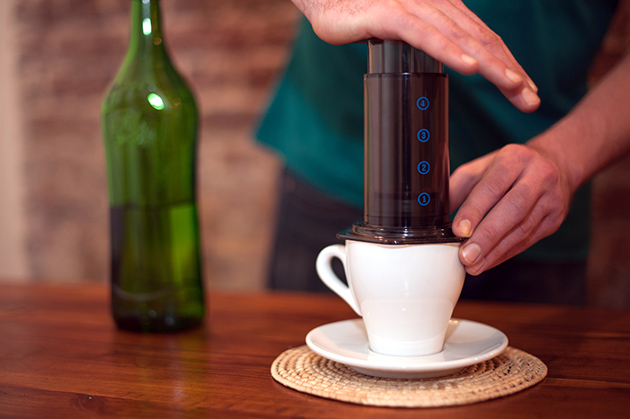 Aero Press – Makes a very good and somewhat stronger coffee. I sometimes add a little bit of hot water to mine. If you like to experiment do some web searches or check out Coffee Geek for alternative methods with the Aero Press. There are also fine mesh metal filters available that can be a good alternative to paper.
Aero Press – Makes a very good and somewhat stronger coffee. I sometimes add a little bit of hot water to mine. If you like to experiment do some web searches or check out Coffee Geek for alternative methods with the Aero Press. There are also fine mesh metal filters available that can be a good alternative to paper.
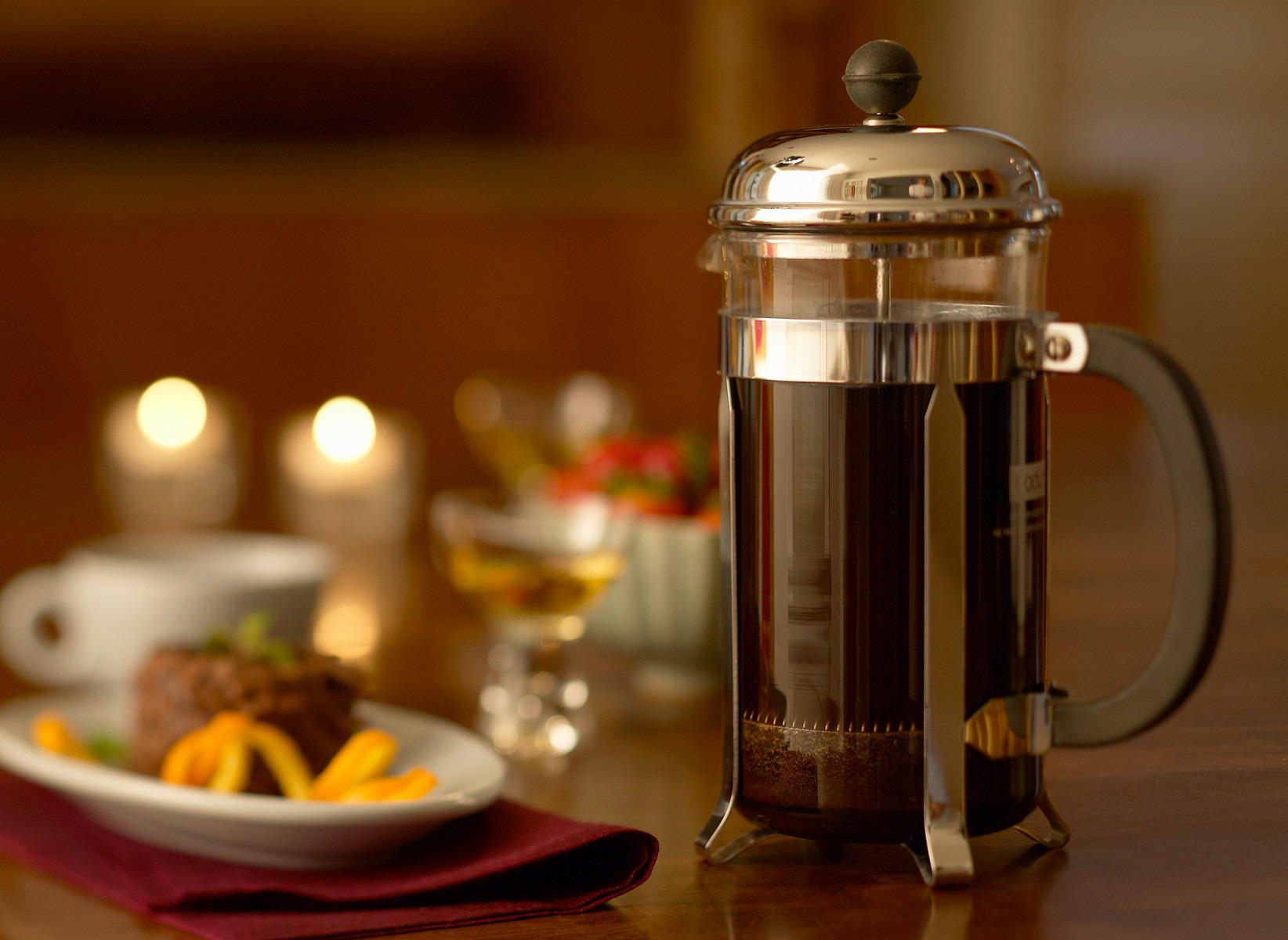 French Press – Makes a very robust coffee but not as strong as Aero. Confused? French Press has more oil from the coffee beans than Aero which filters most of the oil out. The health affects are debated but it seems that most believe that the higher cholesterol of the coffee oil outweigh the benefits. I use my Aero more than French Press but still have a couple of French Press cups per week. We also have several large French Presses that work well for entertaining.
French Press – Makes a very robust coffee but not as strong as Aero. Confused? French Press has more oil from the coffee beans than Aero which filters most of the oil out. The health affects are debated but it seems that most believe that the higher cholesterol of the coffee oil outweigh the benefits. I use my Aero more than French Press but still have a couple of French Press cups per week. We also have several large French Presses that work well for entertaining.
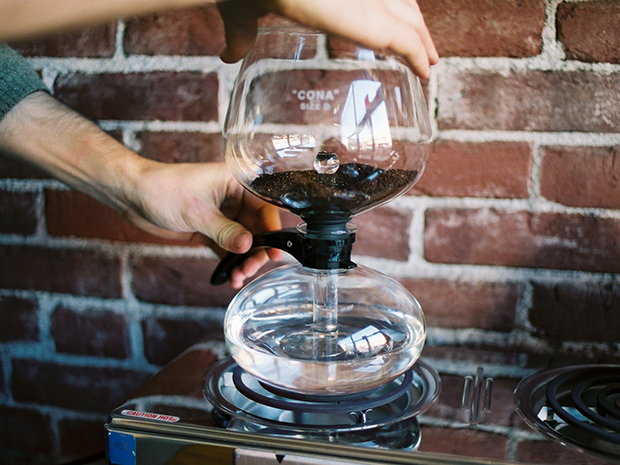 Vacuum Pot – Vac pots make great coffee that to me is very similar to French Press though not quite as strong. They’re a bit more of a pain to use but a lot of fun, especially with guests who’ve never seen one before.
Vacuum Pot – Vac pots make great coffee that to me is very similar to French Press though not quite as strong. They’re a bit more of a pain to use but a lot of fun, especially with guests who’ve never seen one before.
Moka Pot – It’s said that every home in Italy has at least one and often several moka pots. They are popular throughout the rest of Europe as well. Some good videos to get you started on doing it right; Annalisa, James Hoffman, Matteo and Marco.
Machines.
Having a machine make your coffee for you can be a wonderful thing.
American drip coffee is not too difficult (though a surprising number of machines mess it up). START with a good grinder such as the Baratza Virtuoso. I think the best value for good drip coffee is Cuisinart. For the best drip coffee regardless of value the Breville Precision Brewer Thermal may be the ticket. Or for a great Americano a Breville Oracle is the hands down winner.
Espresso drinks are a bit of a different animal. Espresso is easy to mess up and many machines do so. Just getting to fairly decent espresso requires proper grind, proper tamp, proper water temp, proper water pressure, a good spray head and several other elements. Some of these can be done well by a machine and some not so one key is to know what a machine cannot do and avoid any machines that try to do these. The two most important are grind setting and moving the puck.
Grind Setting. Machines do not accurately gauge the grind. Grind differs for every bean and sometimes differs batch to batch. The only way to get a proper grind is to time how long it takes to pull a shot and adjust the grind for the next cup until the pulls time out correctly. This will usually then be good as long as you are using the same beans (same growth source, roaster and roast) though can sometimes change batch to batch. Avoid any machine that doesn’t let you adjust the grind setting like this.
Move The Puck – A correctly tamped puck with enough pressure to eliminate air gaps as much as possible results in a puck that must be knocked out with some bit of force. Since a machine to knock out a properly tamped puck would be big, heavy and expensive then a machine that moves the puck for you must use a much lighter tamp which results in weak and bitter drink more akin to strong American coffee than proper sweet espresso. In short – If you don’t move the portafilter and puck from the grinder to the brewer and then knock the puck out of the portafilter then you are not getting espresso but instead just American coffee. There is simply no way around this.
Move The Puck 2 – Pucks often leave coffee sludge in various bits of the portafilter. When this happens the sludge must be rinsed out or the sludge ends up in your cup adding bitterness. No machine that I know of does this. One more reason why moving the puck is much better done by human hands than machine.
Move The Puck 3 – According to repair people the puck moving mechanism accounts for the majority of repairs and significantly increases the repair rate for a machine.
Here’s the great thing… While difficult for a machine, these are easy for humans and require about zero skill.
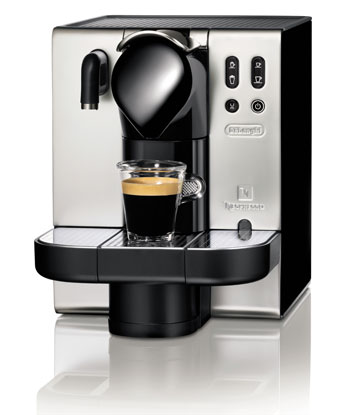 Nespresso – From a user standpoint a Nespresso operates similarly and as easily as a Keurig or Tassimo. Behind the scenes there are significant differences however. Nespresso is a higher pressure espresso type machine (note that I said espresso type machine and not espresso machine) while Keurig is closer to drip with just enough pressure to get water through the k-cup. Nespresso takes greater care in producing their coffee pods than is taken in producing k-cups with grind to sealed pod, and thus air exposure, much quicker. The cups are metallic rather than plastic and the overall result is a much fresher and better tasting coffee than other similar systems.
Nespresso – From a user standpoint a Nespresso operates similarly and as easily as a Keurig or Tassimo. Behind the scenes there are significant differences however. Nespresso is a higher pressure espresso type machine (note that I said espresso type machine and not espresso machine) while Keurig is closer to drip with just enough pressure to get water through the k-cup. Nespresso takes greater care in producing their coffee pods than is taken in producing k-cups with grind to sealed pod, and thus air exposure, much quicker. The cups are metallic rather than plastic and the overall result is a much fresher and better tasting coffee than other similar systems.
Note that there are two Nespresso lines; Classic or OriginalLine and VertuoLine. Classic or OriginalLine is the what you want. VertuoLine is better than Keurig or Tassimo but far behind Nespresso Classic.
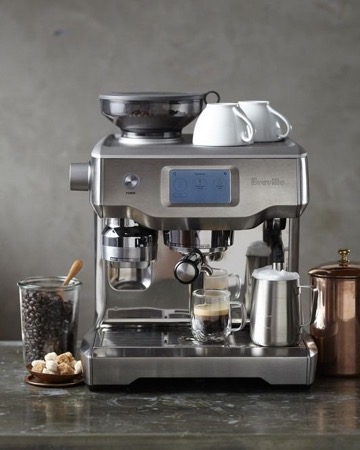
Breville Oracle / Oracle Touch – These are on the pricey end, especially for the Touch version, but are a great all around machine for people who just want a good coffee drink and don’t want to fuss with learning the intricacies of being a barista. The Oracle makes quite good espresso and does a better job of frothing milk (including oat milk) than any automatic or semi-automatic we’ve tried. For regular American coffee it makes espresso and adds hot water – A very good Americano. I never thought I’d see the day when I’d use an automatic like this on a regular basis but I now use it every day for espresso or coffee in the morning and a flat white every afternoon. It has almost totally supplanted all of my other methods.
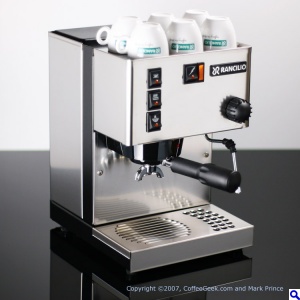 Rancilio Silvia – This is, in my (and many others) opinion, overwhelmingly the ‘best value’ espresso machine for home. Lessor machines (some of which cost a lot more) aren’t nearly as good and a better machine will run you over $2k. Many aficionados will buy a Silvia and then add modifications from PIDSilvia or similar. (note, the new Silvia Pro X is an option to consider that includes the PID and adds a second boiler)
Rancilio Silvia – This is, in my (and many others) opinion, overwhelmingly the ‘best value’ espresso machine for home. Lessor machines (some of which cost a lot more) aren’t nearly as good and a better machine will run you over $2k. Many aficionados will buy a Silvia and then add modifications from PIDSilvia or similar. (note, the new Silvia Pro X is an option to consider that includes the PID and adds a second boiler)
Above Silvia are a plethora of great, and not so great, machines. Personally I think the next step up is a La Cimbali Jr Casa DT1 from Chris Coffee. The Chris version is slightly modified and a great machine and for low volume home use I think a heat exchanger is a good way to go.
Making A Good Cup
Beans – A good and properly roasted bean is critical. I generally prefer French Roast Columbian and this works well for both coffee and espresso/cappuccino. Beans should be rested a few days after roasting (I give them 7) and most are then good for three to six weeks. I get a 5lb bag of Spyhouse Bold & Beautiful the first of each month. If stored in a cool dry place (like in original bag and then in a sealed plastic bin) they can still be relatively good after three or four months. Do not store in a refrigerator!
Fresh Ground – Freshly ground beans are critical. And by fresh I mean seconds matter. If you watch a good barista you’ll see them move extremely quickly once the beans are ground (and they’ll always grind beans fresh for each drink). This is the same at home with an Aero Press or any other method of making coffee. Don’t grind until everything else is ready and then move quickly to brew.
Water – Water and temp are important. Bottled water is perhaps best, followed by filtered tap water (though if your community over modifies your water with chemicals then this won’t be such a good option). I like well water, others don’t. Distilled, over-softened and RO water should be avoided (for coffee and for cooking). Generally 195-205°f is considered ideal. My teapot whistles at 198 so I let it whistle for about 10 seconds and I’m at about 202-205. Boiling water will scald the coffee and below about 195 produces flavorless coffee.
Drip – One key to drip coffeemakers like the Mr. Coffee we’ve found at a rental condo is to realize that the basket is only large enough for 6-8 cups max. This is a time thing. The first minute through the grounds is build up coffee, the next few minutes is the good stuff and then it starts producing weaker and more bitter coffee. So even though it’s a ’14-cup’, you’re better off making only 6-8 cups at a time. So with a Mr. Coffee, fill it with good freshly ground coffee per the normal instructions. More coffee will not help. If it doesn’t have a pre-wet option then spray some warm water in the grounds and let them soak for a minute before starting to make coffee. You can even try stirring them a bit. Fill the coffeemaker with 6-8 cups of COLD water (never use hot as it’s lost it’s O2) and then turn it on to make the coffee. Also, keep the burner OFF unless you like bitter over-cooked coffee.
The biggest issue with Mr Coffee then is that the water temp will be too hot as it relies on the water being a bit above the 212°f to force it up in to the grounds and there’s nothing that can be done about that.
—–
Soap or detergent is the enemy of good coffee. My French and Aero presses get rinsed in water after each use and that’s it. I wash them in the dishwasher about once each year. If, like ours, your dishwasher doesn’t rinse well then it may be worth rinsing your coffee mug under warm water, wiping it with a dish towel, and then rinsing again (this also applies to wine and whisky glasses). Also, before pouring coffee in your mug let it sit with some hot water in it for a few seconds or minutes to warm it up.
In the end, it’s all still personal preference. If you’re happy with your drip, Keurig, percolator, or freeze-dried Sanka there may be no reason to change. Once you try any of the above though you may be hooked. Fortunately, the first two are the least expensive of all methods (except for my Swedish mother-in-law dumping ground coffee in a pan of hot water and then breaking an egg in it).
——
My personal preference for American Coffee is probably ordered something like; an Americano made with good espresso, Aeropress, French Press, Vacuum Pot, Nespresso, Drip, Keurig, Tassimo.
Coffee Tricks
Keeping Hot – When using paper cups, if you stack cup + sleeve + cup then your coffee will stay hotter over twice as long as just a cup or a cup + sleeve. The sleeve creates an air space between the two cups that works as a great insulator.
Better Hotel Room Coffee – When using the paper pods you can get a slightly better brew if you put the pod in the holder and then wet it with some drips of hot water, tap it down a bit, wet it with some drips again and then wait about 1 minute before brewing.
The Best Twin Cities Cafés
Obviously with Covid life is a bit different now. With people finally beginning to get jabs we’re hoping that life can start to get back to normal and our favorite cafés can reopen.
Following are some brief reviews on local places. If I can figure out how I’ll leave comments open for others to provide their input.
Similar to above, personal preference plays a critical role. I go out for a cappuccino just about every morning except Christmas and have for around 40 years so I’ve developed my own personal preference for what a good cappuccino is.
I want to avoid bitter or weak espresso and scalded milk. I want froth and not foam or suds (air bubbles should be almost invisible) and the proper amount of espresso, milk, and froth. I prefer a bit of espresso in my froth (and a bit of powder cocoa is nice). Paper and plastic cups have acids and other chemicals that react with the drink and give a bad taste. Safest is to always use a ceramic mug.
Others will have different and equally valid opinions. As I have time I’ll expand on this list.
Nina’s Coffee Café / Cahoots / Pennys – Best in the Twin Cities. Fairly consistent across employees, espresso isn’t bitter, froth is froth and not suds, proper amount of espresso in the froth, etc. (Note: towards the end of 2017 the quality of drinks at Nina’s began to decline. Hopefully this is temporary.)
Blue Moon / Black Dog / Angry Catfish / Spyhouse / Claddagh – Sometimes froth can be a bit sudsy and espresso slightly bitter but that’s somewhat rare. Generally these produce a good cup.
Dunn Bros – Most Dunn Bros are pretty good and fairly reliable, but not all. The Dunn Bros in Roseville was quite good for years, particularly Travis who was often there in the mornings, but it has recently declined rather significantly and we rarely go there anymore. Roseville is still a good source of beans though.
Starbucks – A great cup is rare, but so is a bad cup. Mediocre, but consistently mediocre so a good option if nothing better is available.
Quixotic – Froth is kind of sudsy and they say they pull their espresso shots ‘ristretto’. This should result in a less bitter cappuccino than a normal shot but theirs have sometimes been quite bitter and unpleasant in my experience.
Caribou – Almost consistently the worst in my opinion. Espresso is consistently bitter and froth is often suds rather than froth. It’s not unusual for the froth and steamed milk to be scalded. They also do not have ceramic mugs for larger drinks. About a decade ago the Caribou in White Bear Lake was quite good, but that is no longer the case. One problem is the machine they use which limits the ability of even the best barista’s. One bright spot is Shirley in North Oaks Caribou who does better than most but is still limited by the machine.
And, some places I haven’t been to enough to form an opinion, but seemed good and are worth checking out; Amore, and Fresh Grounds.
Good drinks can also be found at other places like Taste of Scandinavia in North Oaks, French Hen on Grand or French Meadow. These may not compare to a Cahoots but are better than Caribou.
